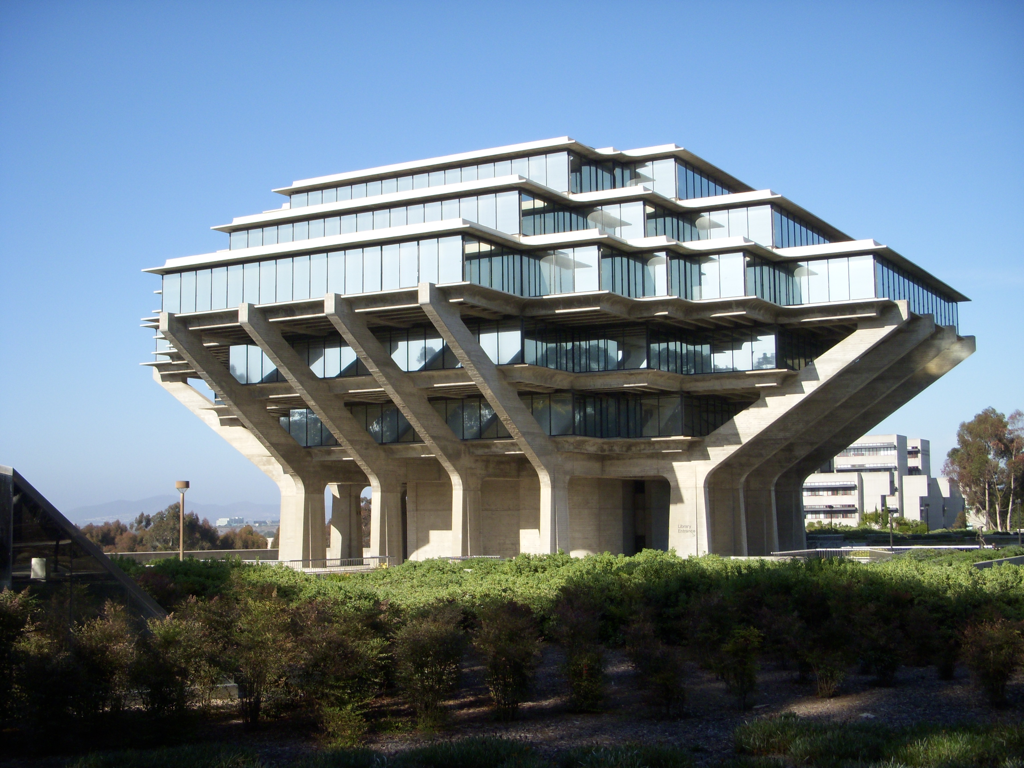Prestressing in concrete structures
The rise of prestressing techniques in concrete structures can in large part be attributed to a desire on part of architects and structural engineers to experiment with innovative and unique building and bridge forms whether to improve the aesthetics or optimize the structural efficiency. Prestressing most simply can be expressed as improving the behaviour of traditional reinforced concrete designs by applying a tensile force to the reinforcing steel within the concrete. The major benefit of prestressing is to prevent cracking of concrete by counteracting the inherent low tensile strength of normal reinforced concrete. To motivate some examples of the use of prestressing where architects and structural engineers have experimented with unique building and bridge forms are among others:
- the Sydney Opera House with it's iconic billowing sails made of precast pre-tensioned concrete elements. Source: https://www.biennaleofsydney.art/venues/sydney-opera-house/.

- the Giesel Library of the USC San Diego with it's inverted pyramid structure using pre-tensioned steel cables to prevent tipping of each cantilever concrete arm outwards. Source: http://architectuul.com/architecture/geisel-library.

As you can see not only are unique and striking architectural forms possible but also beneficial structural mechanisms can be utilized by using prestressed concrete elements. However, the design of prestressed structural members is often regarded as difficult and best left to so-called experts. This is often not the case and the remainder of this article will deconstruct this preconceived notion that prestressed concrete design is difficult by delving into the design philosophy behind the relevant structural mechanics.
How do structural engineers define prestressing?
To begin it is necessary to define what is meant when structural engineers refer to prestressing. Prestressing in relation to structural concrete is defined as:
the creation of internal stresses in a structure to improve its performance such that these stresses counteract the stresses caused by application of a external load.
Since concrete is durable and strong in compression but weak and susceptible in tension to failure, prestressed concrete improves the performance of the concrete member with regard to it's resistance to tension (i.e. to reduce cracking). Remember that failure does not always refer to catastrophic failure but can also refer to serviceability (cracking) issues. This is beneficial since often a limiting design case (i.e. the serviceability limit state, SLS) of many ordinary reinforced concrete members is cracking in tension. It should however also be remembered that both ultimate (ULS) and serviceability (SLS) limit states need to be designed for and prestressing has limited effect in ULS. So the reason to apply prestressing is quite obvious in terms of the benefits to take advantage of but the question now becomes how is this prestressing effect included in structural analysis/design?
Structural engineers include the prestressing effect in our calculations by either introducing a effective prestressing force or considering a tendon force acting on the structural concrete member. Firstly, the effective prestressing force is defined as:
the force in the prestressing steel when the concrete stress at the level of the prestressing steel has the value of zero.
Thus, this force represents the internal stresses (or internal restraint) that originates from the tensioning of the prestressing steel in relation to the stresses felt by the concrete itself. At this point in our discussion, it is useful to also differentiate between pre- and post-tensioning of structural concrete members. In pre-tensioned members the prestressing is applied before the concrete has hardened while in post-tensioned members the prestressing is applied by a force after the concrete has already hardened.
This difference in pre- and post-tensioning forces us, as structural engineers, to use a alternative method to the effective prestressing force which is identified as the tendon force approach. In this tendon force approach, no compatibility in strain exists between the steel and concrete constituent parts of the member which makes a difference in the actual structural calculations. Hence, the tendon force is defined as:
the actual force in the prestressing steel for any load case under consideration.
So the tendon force is the actual force in the prestressing steel which will vary with whatever the external load applied on the concrete member is whereas the effective prestressing force will not vary. This may appear awkward and non-intuitive at first but with practice this abstraction of a effective prestressing force proves incredible valuable particularly in design of pre-tensioned structural concrete members.
Conclusion: Prestressing in concrete as advantageous?
The basic design philosophy behind the structural design of prestressed concrete members (either by pre- or post-tensioning) is developed from the relationship of stress and strain of these structural members. In this sense, the design and analysis is not as difficult as it is often made out to be. The major additional requirement in design of these members is that the structural engineer needs to take into account how the additional strains from tensioning the prestressing steel will effect the concrete strains. Depending predominantly on the type of member and location of prestressing steel within the member cross-section, the structural engineer can tell how much of a positive or negative effect the prestressing will have on the perfomance of the member. For example, for a simply supported pre-tensioned beam where the prestressing steel is located along the edge which will experience tension under loading (where you would locate ordinary reinforcement) the prestressing will have a largely beneficial effect in the long term performance. This is due to the increase in compressive strain at the level of the prestressing steel (internal equilibrium must be maintained because of strain compatibility) which must first be overcome by bending induced by the applied load before any tensile stresses in the concrete will be experienced.
Hopefully, this article has shown that prestressed structural concrete design is not as difficult as it is often made out to be and that the final example has given a brief idea of how to use the information presented in the article to qualtitatively assess the effect of prestressing on simple structural concrete members. If you are interested in more details of prestressing in structural concrete design/analysis, stay tuned as two more articles on this topic will be forthcoming specifically with more details (including equations) on how to design/analysis these members and differences between different standards (primarily between North America and Europe). As always thanks for taking the time to read the whole article and I hope you have found it informative.